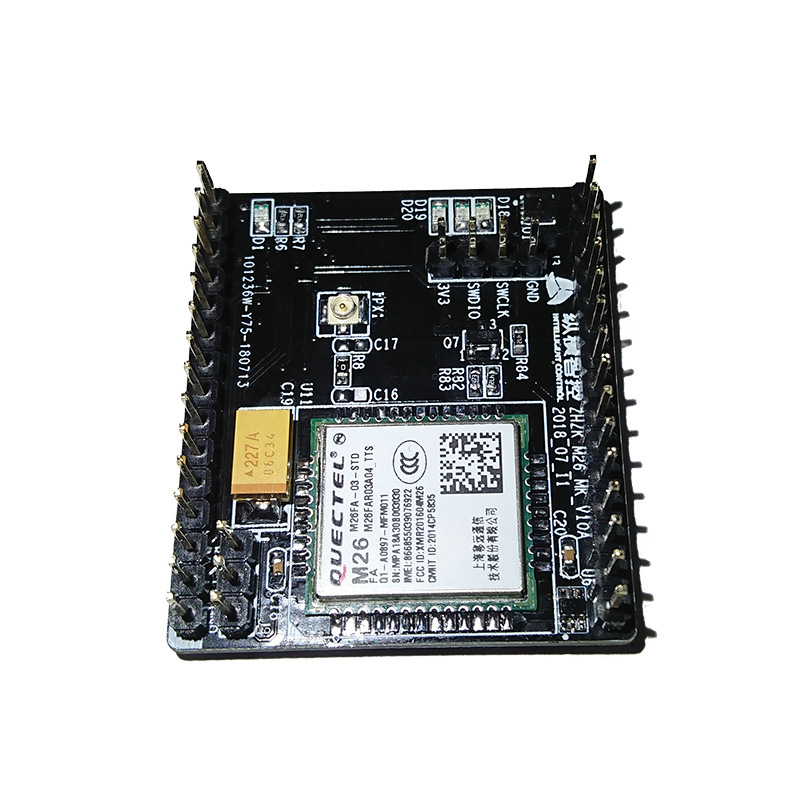1. What is a 2.4g wireless module?
The 2.4g wireless module operates in the 2400-2484MHz range and can communicate through scanning protocols. The air rate is up to 1Mbps and the output power is up to 4dBm. The module has the advantages of low power consumption and high cost performance.


Common 2.4g wireless modules on the market include: RF2401, RF2401F20, RF2401PRO, Beacon, and Beacon600. Users can choose multiple types of wireless modules with transmission distances of 50 to 500 meters based on cost considerations.
2.4g wireless module
2. The role of 2.4g wireless module
Function 1. Used to build a wireless communication network with star topology. And it must be a multi-point star topology, and some special places require wireless communication. On the one hand, this transmitting and receiving module is cheap, and the cost of forming a star topology is relatively low; on the other hand, this transmitting and receiving module can adopt a modular design, which is small in size, easy to use, and easy to integrate. This transmitting and receiving module is very practical for wireless networks with low communication speed requirements and short distances.
Function 2. Used for wireless multi-channel (parallel) control. For example, complex remote control robots, etc., require multi-channel (parallel) control in some places. One method is to use the receiving module to directly connect to the decoder, and then connect it to relays and other electronic components to drive subsequent controlled objects; the other method is to use the receiving module to connect to the microcontroller, and after processing the data, use The microcontroller is connected to electronic components such as relays to drive subsequent controlled objects. Usually a pair of transmitting and receiving modules can achieve up to six parallel wireless controls. If the required number of channels is greater than six, multiple pairs of transmitting and receiving modules can be used to work simultaneously to meet actual needs.
Function 3. Used for universal serial port (RS232 wireless data transmission). There are usually many control instruments and equipment that use serial ports, and communication with these devices must meet serial port requirements. Some extraordinary places, industrial control sites. When wireless transmission is necessary, the transmitting and receiving modules mentioned in this article can be naturally selected. However, it must be noted here that in order to use this communication method, corresponding software must be compiled at the transmitter and receiver to convert file formats in order to achieve the purpose of wireless communication. If the communication system is full-duplex, it can This is achieved by using two transmitting and receiving modules to work simultaneously.
3. Application fields of 2.4g wireless modules
2.4G wireless modules are widely used in wireless health and sports products, wireless mice and keyboards, product information push, wireless remote sensing, wireless ranging systems, alarm security systems, smart homes, toy control, tire pressure monitoring and other fields.
With the 2.4G wireless module, all the whole-house wireless smart homes can be linked together, and all smart home devices can be controlled through the network link, and then all the switches of the whole-house wireless smart homes can be controlled, and the brightness of the lights can be adjusted. , adjusting the lifting and lowering of curtains, etc. Through continuous technological innovation, whole-house wireless smart homes can be controlled by Xiaobai robot voice, smart scene panels, sensors, etc.
4. How to choose antenna for 2.4g wireless module
Generally speaking, the required impedance of the 2.4g wireless module is 50 ohms. The antenna used with the 2.4g module has a red wire, 2.4g folding rod antenna, 2.4g gold-plated straight rod antenna, 2.4g gold-plated elbow rod antenna, 2.4g small suction cup antenna. These antennas are special antennas designed for 2.4g wireless communication systems. The antennas have good standing wave ratio performance, small size, ingenious structure, easy installation, stable performance, and good anti-vibration and aging capabilities.
2.4g wireless module
When choosing an antenna for a 2.4g wireless module, you can consider frequency, gain, input and output impedance, etc. Generally speaking, the most important parameter is the gain. The greater the gain, the stronger the signal and the farther the transmission distance. Also, the frequency of the antenna must match the frequency of 2.4g. If you choose a 433m antenna with a 2.4g module, you will not be able to maximize the effect of the antenna.
To sum up, when choosing an antenna for a 2.4g wireless module, you can consider frequency, gain, input and output impedance, etc., and choose a matching antenna to maximize the performance of the 2.4g module.
